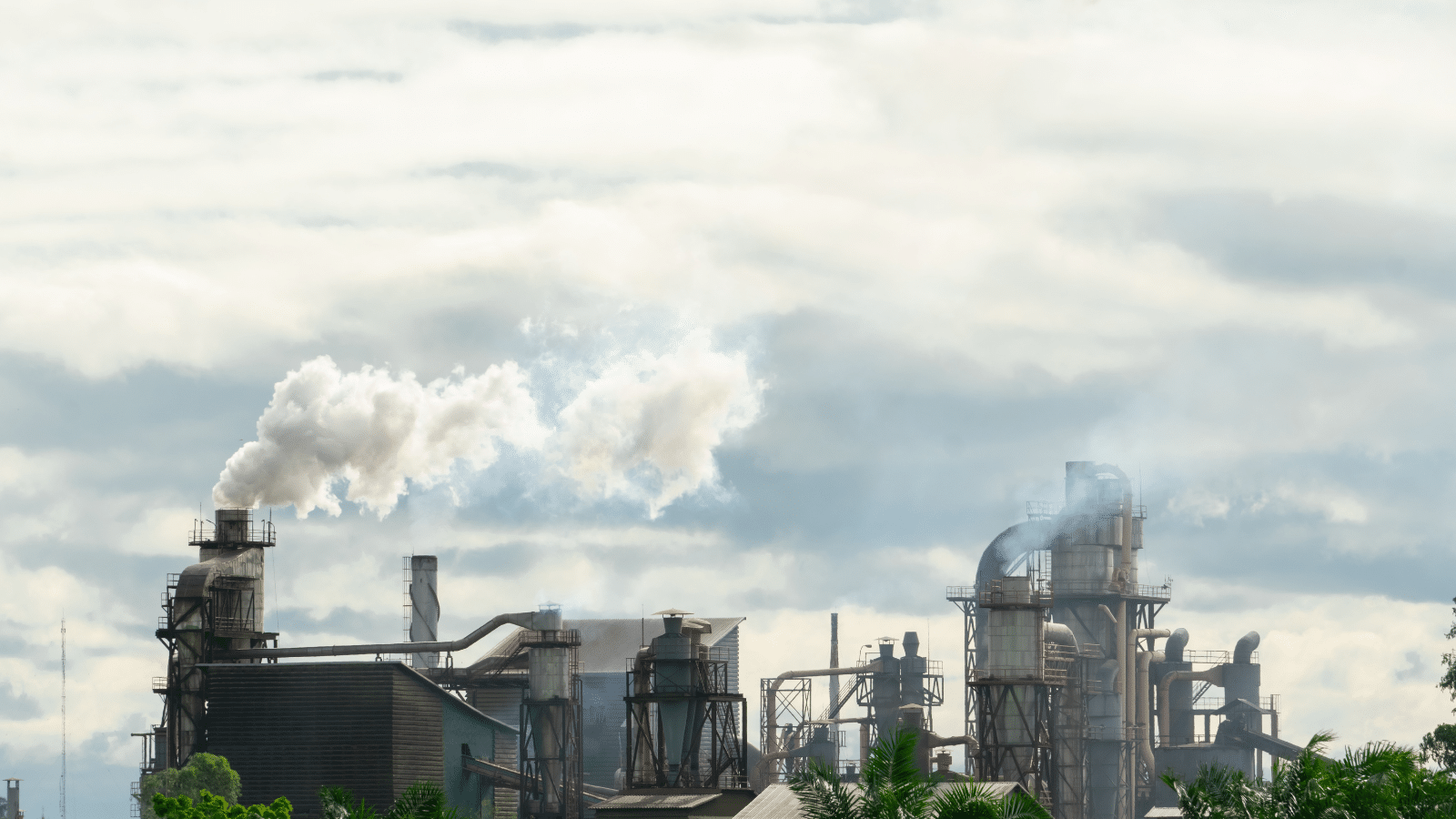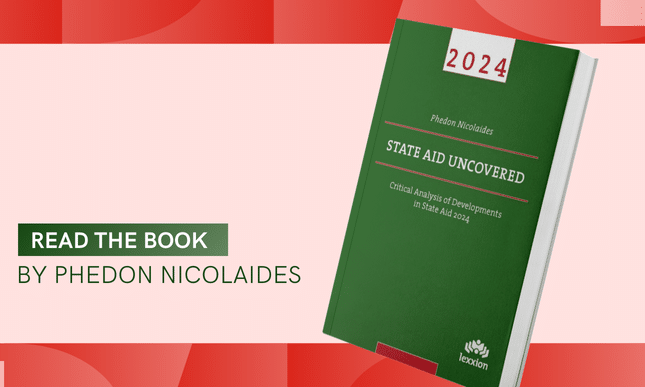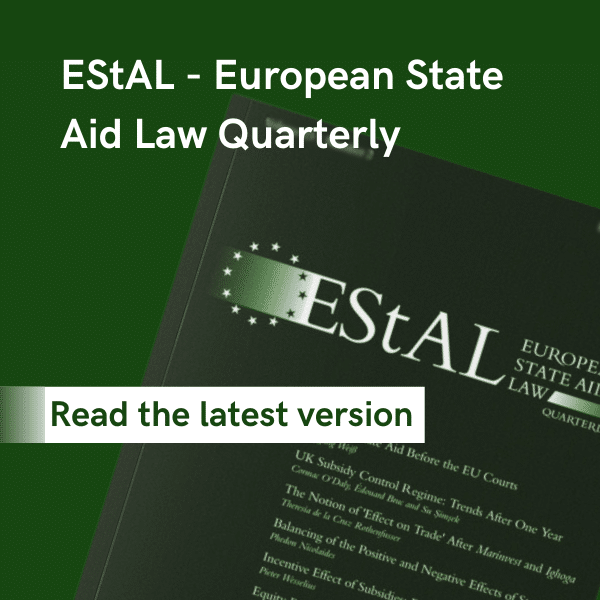
Introduction
State aid rules are, in general, less favourable to large companies mostly because they have more own funds, access to cheaper finance [mostly due to longer track record and higher credit ratings] and are more mobile so that regional handicaps have a lesser effect on them. Size also brings other advantages such as the ability to hire top economic and legal advisors who are well-versed in State aid rules. A search of the Commission’s registry of State aid awards reveals that some prominent corporate names appear repeatedly. It is possible that applying for State aid becomes less difficult if the applicant was successful in previous applications. Companies learn to “speak” State aid and present projects that public authorities are more likely to support.
ArcelorMittal, the multinational steel and mining company with operations in 17 countries, is a case in point. Recently, it has received multiple awards of State aid from several Member States and in particular for decarbonisation of its steel plants [see cases France SA.104903; Germany SA.63733; Belgium SA.103371 & SA.104897]. Yet, the assessment of the compatibility of the aid with the internal market does not seem to consider the indirect effects of other awards to the same company.
The most recently published Commission decision on ArcelorMittal concerns a Spanish measure to support a project entitled “H2 Circular DRI”. The purpose of the project is to contribute to the decarbonisation of ArcelorMittal’s steel plant and the reduction of CO2 emissions from the manufacturing of steel through the use of hydrogen. Steel will be produced by converting iron ore into “direct reduced iron” [DRI]. Renewable hydrogen will be used instead of natural gas as “the reducing agent” in the manufacturing process. Renewable hydrogen will also be used as a source of energy for heating the steel furnace. However, the use of hydrogen will be increased only gradually, as the use of natural gas will be reduced and eventually phased out by 2028 as a process gas and by 2029 as a heating gas. The Commission approved the aid measure in decision SA.104904.[1]
The measure provides aid in the form of a direct grant of EUR 460 million to be paid out in one instalment. Spain intends to finance the measure with money from the Recovery and Resilience Facility [RRF].
Interestingly, the Commission decision also compares the technology used by other ArcelorMittal steel plants in Germany to illustrate the innovative aspects of the aided investment in Spain. The H2 Circular DRI project was selected in the framework of an open call that was part of an Important Project of Common European Interest [IPCEI] on hydrogen technologies and systems co-designed with 22 other Member States.
As will be seen below, one of the conditions for the aid is that ArcelorMittal disseminates its experience from the project. This suggests that there are positive externalities. But the same can be said for previous awards to ArcelorMittal’s other steel plants in other Member States. This raises the question whether ArcelorMittal’s learning advantages from other aided projects ought to be taken into account in the assessment of the compatibility of the aid with the internal market.
Avoided CO2 emissions
The projected emissions of CO2 are [70-80] million tonnes, while the emissions in the counterfactual scenario are estimated at [80-90] million tonnes. The emissions from the current production process are forecast at [100-200] million tonnes.
Therefore, it is envisaged that “(37) the project [will] avoid emissions corresponding to [10-20] million tonnes of CO2 over the expected duration of the H2 Circular DRI project as compared to the counterfactual scenario […] In addition, […] the project would avoid 70.9 million tonnes of CO2 over the expected project duration compared to the current […] production route.”
In other words, the counterfactual scenario without aid is not the current state of the plant. The use of natural gas and the emissions of CO2 will also change in the counterfactual scenario. [see below paragraphs 93-94 of the decision for a more detailed explanation].
It should also be noted that the production of hydrogen will not cause CO2 emissions as the electricity used to operate the electrolysers will be entirely renewable as it will be generated by dedicated photovoltaic plants. In addition, the H2 Circular DRI project will comply with the principle of “do no significant harm” as laid down in in Article 17 of Regulation 2020/852 on the establishment of a framework to facilitate sustainable investment.
Funding gap
The net present value [NPV] of the factual scenario without the aid is EUR – [500 – 600] million [i.e. the NPV shows a projected loss]. The cash flows are discounted at the company’s Weighted Average Cost of Capital [WACC] which is estimated at [5-10]%, as determined by an external consultant.
The total costs of the H2 Circular DRI project – including both investment and operating costs – amount to EUR [20-30] billion. The estimated investment costs of the construction of the direct reduction plant are EUR [0.9-1.0] billion. The expected revenue is also in the range of EUR [20-30] billion.
The terminal value of the projects is EUR [200 – 300] million which corresponds to the residual value of buildings (depreciated over 40 years) and equipment (depreciated over 20 years).
Counterfactual scenario
“(50) The Spanish authorities have explained that, in the absence of the aid, the beneficiary would not undertake the same investment nor any equivalent alternative decarbonisation investment.”
“(56) On that basis, according to Spain, the NPV of the counterfactual scenario can be assumed to be zero as the most likely counterfactual consists in the beneficiary not carrying out an activity or alternative investment.”
Claw-back mechanism
“(58) To reduce the risk of overcompensation in case of unexpected positive developments going beyond the current forecasts, the Spanish authorities committed to put in place a claw-back mechanism covering the entire duration of the project.”
“(59) The claw-back mechanism will entail a comparison of the project’s negative and positive cash flows (including the actual State aid disbursements and additional benefits resulting from the project [e.g. additional State aid]). The basis for such verification will be ex post figures, which have been subject to annual approval by an independent auditor. For this purpose, the beneficiary will be required to submit separate analytical accounting. In case the verification leads to a positive value (‘surplus’) including the actual State aid disbursements, the beneficiary will pay back 70% of the surplus to the Spanish authorities. To ensure, however, that the beneficiary still has an incentive to deliver its project in an efficient manner, a share of 30% of any potential surplus will remain with the beneficiary. The Spanish authorities will regularly report to the Commission on the implementation of the claw-back mechanism.”
Knowledge dissemination
As with other similar aid measures in favour of ArcelorMittal, the aid is granted on condition that the project results and information on the experience of ArcelorMittal will be disseminated.
“(63) The beneficiary will disseminate the knowledge obtained as a result of the H2 Circular DRI project, which will facilitate the roll-out of the technology by other market players.”
“(64) Dissemination will be achieved through knowledge sharing in technical conferences […] and in a number of relevant specialist journals […] Further, the beneficiary will engage with hydrogen clusters and professional organisations to promote the use of renewable hydrogen in the industry […] Moreover, the beneficiary has also committed to fund Ph.D. and master theses.”
(65) Dissemination will cover, among others, the following areas of knowledge obtained thanks to the H2 Circular DRI project:
(a) Technical concept behind the project, design parameters and expected operational results, with special emphasis on the DRI reactor;
(b) Start-up of the facilities and first industrial results during commissioning;
(c) Industrial results achieved after ramp up, with special emphasis on the DRI reactor and including the new steel cord and rail qualities on DRIEAF route;
(d) Environmental impact of the project.”
In addition, “(66) ArcelorMittal will license its foreground intellectual property at FRAND conditions to other market players active in the European the steel sector.”
Compatibility
The Spanish measure satisfied all four criteria of Article 107(1) TFEU. The Commission assessed the compatibility of the measure with the internal market on the basis of the 2022 guidelines on State aid for climate, environmental protection and energy [CEEAG] and in particular section 3 on the general compatibility principles and section 4.1 on the specific compatibility criteria for aid for the reduction and removal of greenhouse gas emissions including through support for renewable energy and energy efficiency.
With respect to the incentive effect of the aid, the Commission first reiterated that “(89) State aid can only be considered to facilitate an economic activity if it has an incentive effect. An incentive effect occurs when the aid induces the beneficiary to change its behaviour towards the development of an additional or more environmentally-friendly economic activity, and if this change in behaviour would not otherwise occur without the aid.”
“(90) In order to demonstrate the presence of an incentive effect, point 28 CEEAG requires to identify and to quantify the factual scenario and the likely counterfactual scenario in the absence of aid.”
“(91) In the factual scenario with aid, the beneficiary will invest in the H2 circular DRI project, consisting in the construction and installation of a DR plant with a capacity of 2.3 million tonnes of DRI per year. […] the NPV of the H2 circular DRI project is negative and amounts to EUR – [500 – 600] million (recitals (40) to (42)).”
“(92) In the absence of the aid and given the significant negative NPV, the beneficiary would not undertake the same investment (recital (50)) nor any other alternative investment. Therefore, in line with point 52 CEEAG, the Commission considers that the NPV of the counterfactual scenario corresponds to zero (recital (72)).”
“(93) The […] counterfactual scenario […] is credible, genuine and related to decision-making factors prevalent at the time of the decision by the aid beneficiary regarding the project. First, it corresponds on the one hand to the same approach as in the factual scenario (decommissioning of blast furnace A) and second, also corresponds to processes that the company has introduced in Spain in the recent past (increased electrification). The key difference is the investment into DRI […] Also, in the absence of the aid, the beneficiary would not have sufficient incentives to engage in the supported project and would not undertake an alternative projects aimed at reducing or avoiding greenhouse gas emissions linked to the reduction of iron ore. The Commission notes that the quantification of costs and revenues of the factual scenario, as submitted by the Member State, shows a negative NPV (recital (40)). This demonstrates that investing in the H2 Circular DRI project would not be profitable for the beneficiary, nor would it allow the beneficiary to recuperate the high costs of the investment. […] Furthermore, […], it appears that the market, on its own, would not provide sufficient incentives to invest in the reduction of greenhouse gas emissions in the steel value chain, including by investing in DR plant operated using renewable hydrogen (recital (54)). Also, no Union standards have been adopted requiring undertakings that operate in the steel manufacturing sector to change their production processes or to produce a certain share of steel products in a low-CO2-emission process (recital (55)). […] Furthermore, the Commission notes that technologies aimed at CO2 emissions reduction from steel manufacturing other than the DRI/EAF route are not considered a credible alternative in the short to medium-term (recital (30)).”
“(94) The Commission notes that the quantification of costs and revenues of the factual scenario, […], shows a negative NPV (recital (57)). This demonstrates that investing in the H2 Circular DRI project would not be profitable for ArcelorMittal España, nor would it allow the beneficiary to recuperate the high costs of the investment.”
The Commission concluded that point 28 CEEAG was fulfilled. In addition, the Commission noted that works on the H2 Circular DRI project had not started. Therefore, the requirement in point 29 CEEAG [no aid to a project that has already started] was fulfilled.
Furthermore, “(97) point 32 CEEAG stipulates that aid granted merely to cover the cost of adapting to Union standards has, in principle, no incentive effect. However, as explained in recital (55), no Union standards have been adopted requiring undertakings that operate in the steel manufacturing sector to change their production processes or to produce a certain share of steel products in a low-CO2- emission process. In relation to steel production, the Commission also notes that Union legislation does not impose a maximum level of greenhouse gas emissions for steel manufacturing processes. […] Therefore, the requirements of CEEAG point 32 are fulfilled.”
With regard to possible breach of any relevant provision of EU law “(100) the Commission has no reason to consider that the measure would involve any breach of relevant Union law.” “(101) Therefore, the Commission considers that the measure does not infringe relevant Union law, and that the condition of point 33 CEEAG is fulfilled.”
With respect to the proportionality of the aid, the Commission, first, recalled that “(112) points 103 and 104 CEEAG state that aid for reducing greenhouse gas emissions should, in general, be granted through a competitive bidding process, that, in principle, should be open to all eligible beneficiaries to enable a cost effective allocation of aid and reduce competition distortions.”
“(113) The Commission notes that the present measure falls under the exception from the requirement to allocate aid and determine the aid level through a competitive bidding process set out in point 107(c) CEEAG”.
“(114) Therefore, as set out in point 51 CEEAG, in the absence of a competitive bidding process, the Commission has assessed the proportionality of the aid in question by comparing the profitability of the factual and counterfactual scenarios, based on the quantification of costs and revenues submitted by the Member State. As indicated in point 52 CEEAG, where the most likely counterfactual scenario consists in the beneficiary not carrying out an investment or continuing its business without changes, the net extra cost, or funding gap, of the aided project may be approximated by the negative NPV of the project in the factual scenario without aid over the duration of the project.”
“(116) Since […] the beneficiary would not undertake any alternative investment in the absence of aid and would rather continue its normal business conduct, the Commission, in line with point 52 CEEAG, considers that the NPV of the counterfactual scenario can be approximated to zero (recital (56)). Therefore, as indicated in point 52 CEEAG, the net extra cost may be approximated by the negative NPV of the project in the factual scenario without aid over the duration of the project; this corresponds to EUR [500 – 600] million.”
“(120) As regards the WACC, the Commission notes that […] the hurdle rate of [5-10]% used for the calculations, which was determined by an external consultant, corresponds to the beneficiary’s internal hurdle rate (recital (41)). The Commission finds this WACC reasoning credible.”
“(125) As the aid amount does not exceed the funding gap of the H2 Circular DRI project, as defined in recital (91) […], the Commission considers that the aid is proportionate in that it does not exceed the minimum necessary for the aided project to be sufficiently profitable.” The amount of aid was EUR 460 million. The funding gap was [500-600] million.
With respect to the negative effects of the aid, the Commission concluded that aid measure would not cause undue negative effects on competition and trade. Therefore, it authorised the aid.
[1] The full text of the Commission decision can be accessed at:
https://ec.europa.eu/competition/state_aid/cases1/20255/SA_104904_124.pdf



